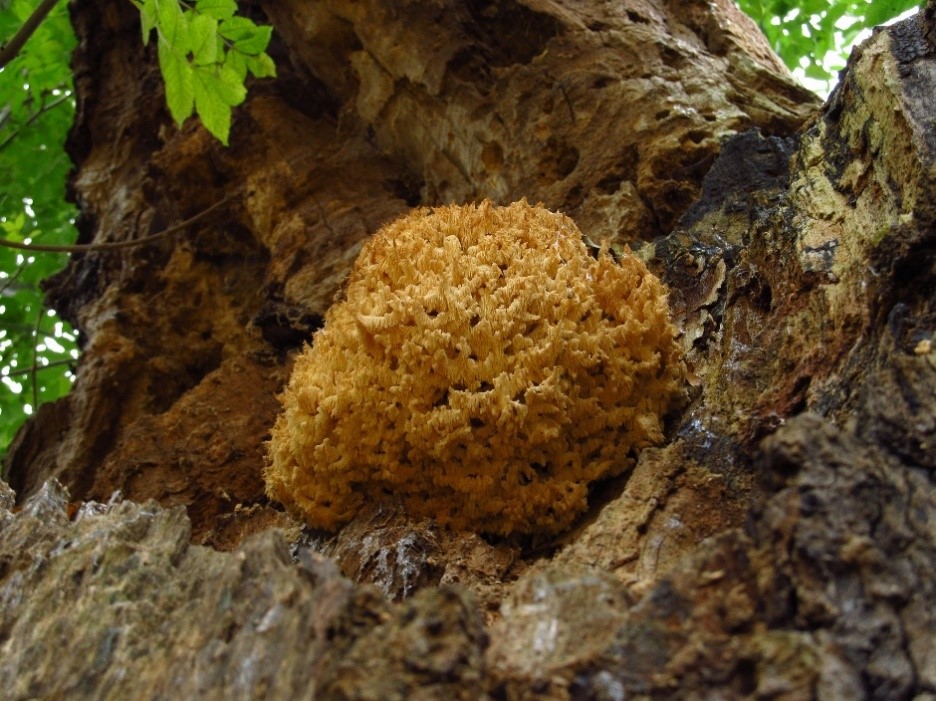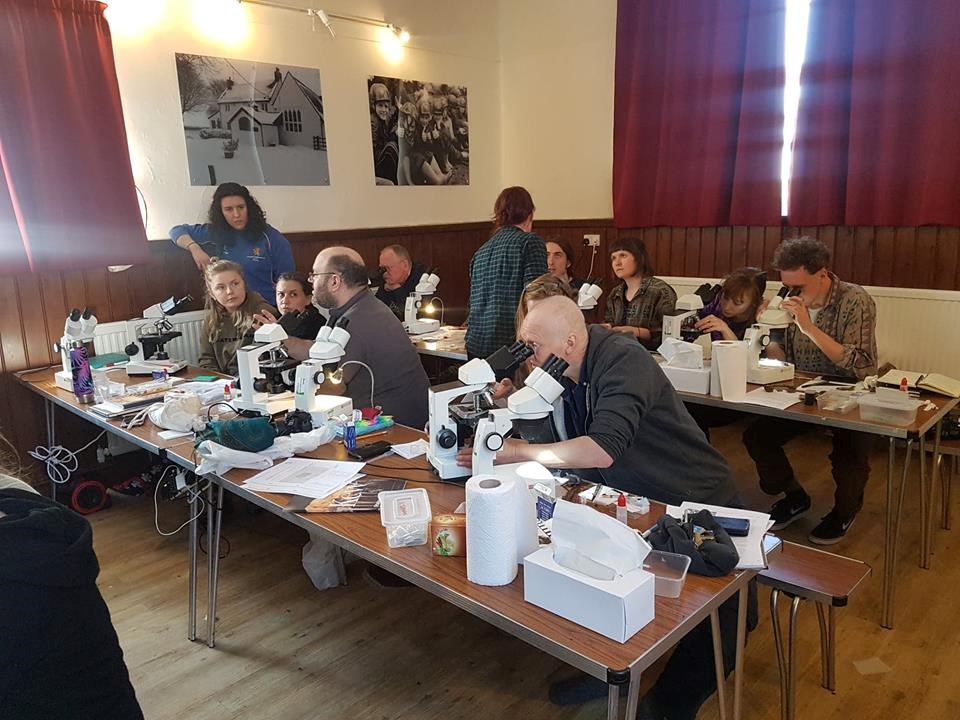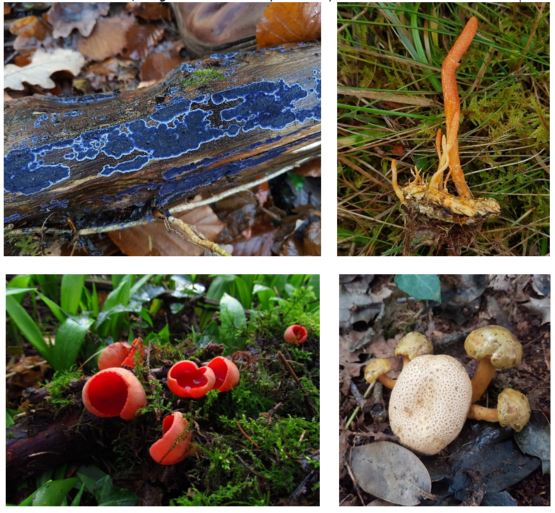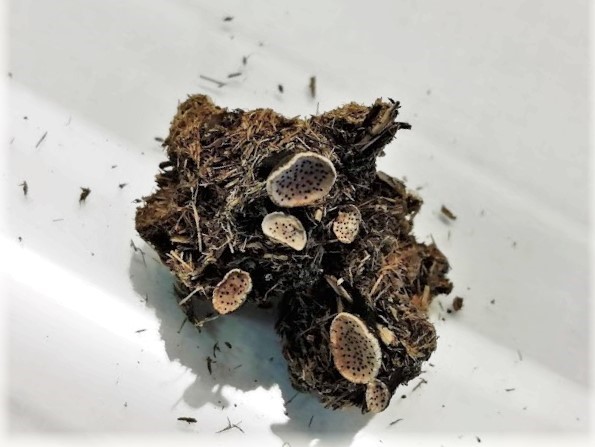
All Things Fun-GAL
Fungi are some of the least known and mysterious organisms on Earth. With a Kingdom of their own and being most closely related to animals than to plants, they are the unsung heroes of all terrestrial ecosystems, recycling nutrients, enabling water uptake by plants and contributing to carbon sequestration. They have uncountable medical, industrial, agricultural, and sustainable applications, but can also have devastating impacts on our health and food security. Given their relevance and the impact they can have in our lives, it is surprising how little we know about them. The fungal kingdom is now thought to encompass 2.2 to 3.8 million species, an estimate that has been improved by recent developments in DNA sequencing technology, but just 145,000 have been properly described globally, with a rate of around 2,000 new species being described each year.
Royal Botanic Garden, Kew (RBGK) has been a leading light in fungal taxonomy for over 140 years, hosting the world’s largest fungarium, with over 1.25 million fungal specimens. Kew’s fungarium is an extremely valuable reference collection as it includes many important type specimens (this is the physical sample that was originally used to describe a new species) and historical samples such as subcultures of Alexander Fleming’s original Penicillium, or specimens collected by Charles Darwin whilst on the Beagle. Nowadays, mycologists at Kew continue working on unravelling the fungal diversity, globally and in the British Isles, and try to understand how fungi have evolved through time and how they interact with their environment. Projects are diverse and include Malagasy and Colombian fungi, the Fungal Tree of Life, or the study of plant-fungal interactions in alpine ecosystems, amongst others.
The work on British fungi has been specially supported by the Lost and Found Fungi (LAFF) community science project, which has engaged with amateur field mycology groups across the country, increasing conservation engagement and developing skills within the recording community. This initiative combines taxonomic work, distribution mapping, molecular data, and checklists, which contribute towards global and regional red-listing assessments and help to increase the presence of fungi in conservation assessments.

The fungal component of the Darwin Tree of Life (DToL) will greatly benefit of this network of expert field mycologists, as we are aiming to eventually collect, DNA barcode, and generate high quality genomic data for all the known fungal species in the British Isles (ca. 17,000). A big undertaking that will require the joint forces of field and lab mycologists from different institutions across the country.
As one of the Genome Acquisition Labs (GALs) for DToL, our work will include obtaining fresh, high quality specimens from a widely diverse range of habitats. Every geographical area, plant and micro-habitat will support different species of fungi so our searches will take us far and wide. To achieve this, we are designing a community science engagement project that will seek to enlist the help of local experts and amateur groups around the country to make collections of our target taxa. When designing collection strategies for fungi we have a very different set of considerations compared to many other taxonomic groups. Firstly, and perhaps most importantly, nearly all fungi are ephemeral. Their sporocarps (spore-bearing structures) are temporary structures that are only produced when certain stages of the organism’s life cycle have been reached and environmental conditions (mostly temperature and humidity) are adequate. This means that planning field collecting trips can be treacherous, reliant on weather conditions and with no guarantee of finding the same species on a known site even when timing has proven fortunate. This is one of the exciting things about studying fungi, you never know what you’re going to get! This is also one of the key reasons for engaging the mycological community with our DToL work. Individuals and local groups are out regularly and know their areas exceptionally well. They are often able to revisit sites numerous times in a season, greatly increasing the chances of finding the sought species. As already demonstrated by the LAFF project and the historical collections in Kew’s fungarium, we are very lucky to have great working relationship with the amateur community, especially through British Mycological Society (BMS) groups, that have assisted with records and specimens over the years. We will be developing additional training opportunities and support with small taxonomic projects as an exchange for this support and to continue developing mycological knowledge throughout the UK.

The fungi we will be collecting come in an astounding array of shapes, colours, and ecological roles. From the luridly coloured, minute (<1mm), clustered apothecia of some ascomycete fungi, through to the large pom-pom like fruitbodies of our rare and majestic Hericium species, we will be looking high and low to find our targets. In the woods and in the meadows, in peat bogs and on mountain tops, on and in the trees, below the surface of the soil, on bone and sprouting from the carcasses of unfortunate invertebrates, fungi can be found anywhere if you know how to look for them.

Alongside the field community, we are working together with mycologists from RBGE, MBA, Aberystwyth University, Cardiff University, and Oxford University that are contributing with their groups of expertise and their extensive knowledge on the biology of fungi. Together we are developing the first lists of target taxa and priority species for a sucessful first phase of the DToL project.
Fungi can establish very sophisticated symbiotic interactions with other organisms, and some of them, like lichenised fungi, can host an incredibly diverse microbiome inside their bodies. These associations can pose an additional challenge to our sampling process.
Where these hosted organisms are also fungi, this can lead to problems of isolation of the right DNA, adding another layer of complexity to the task. In these cases, cultures of fresh fungi can be made from spore or tissue samples isolated on to nutrient agar in petri dishes, although some fungi have proven difficult to culture and many have never been attempted. As part of our field trips, we will be making cultures of our fresh finds once they are back in our field workroom. We will also be taking additional tissue samples to store in DNA preservatives as backups, should the cultures fail. In all collections, we’ll make sure a good representative is dried properly (usually in a portable food drier at less than 40C) for storage in our fungarium for posterior reference.
To facilitate collections provided by our community contributors, we have developed an online collections portal and DNA preservation kits for sampling throughout the year. When a target specimen has been found, contributors can quickly upload detailed information about the location, substrate, images, and other important features of their finds, either in the field on the mobile app or from a desktop computer. This portal will greatly streamline the whole process and will allow us to work with contributors from Land’s End to John O’Groats, whenever something of interest is found. The DNA preservation packs will allow these contributors to take a number of tissue samples from the specimens, which are then carefully packaged and posted to our mycology labs at RBG, Kew, where further work will then be carried out on them.
Once in our labs at Kew, samples will enter into a strict processing pipeline: the dried voucher specimen will be databased and curated in our collection; the preserved tissue samples will be prepared to be sent to Wellcome Sanger Institute for genome sequencing; in case of cultures, a piece of mycelium will be lyophilised and prepared for shipping and the rest of the culture will be cryopreserved at very low temperature and stored at Kew. These cryopreserved cultures can be revived at any time and new fungal subcultures being produced. In addition to our own collection, we also count with an extensive fungal culture collection ready to be used at CABI, so for some of the species we may not find in the field they might be hidden in CABI’s rich collection.
All bits of tissue, vouchers, cultures, will be accurately coded to allow for further tracking down the line. Feeding from the field online forms, a complex database will gather all the information associated to each single specimen, and just before sending the sample to Wellcome Sanger Institute, a DNA barcode will be generated to confirm its identity.
Fungi looks can be very misleading, two almost identical specimens may represent completely different species, and absolutely disparate shapes can have the same genetic identity. Mycologists didn’t realise of this conundrum until we entered the molecular era and started regularly sequencing our field collections. Fungal taxonomy has undergone a revolution in recent years, with families, genera, species being constantly re-arranged and renamed in the light of new discoveries. Complicating the matter, fungi can often be invisible to the naked eyed and devoid of features that would help us identify them morphologically, leaving us with DNA barcoding as the only tool to categorise them.
DNA barcodes are obtained through DNA extraction and sequencing of short standardised portions of DNA, which are then compared with online DNA repositories, allowing us to assign each sample to a known species (or excitingly, discover a new one). In many cases an integrated approach combining genetic tools, with morphological and ecological traits is the best option to refine our identifications. Often microscopic structures or habitat preferences gives us a hint of what it can be. For instance, the tiny rare ascomycete Poronia punctata in the UK thrives on pony dung, while the morphologically similar, but genetically distinct, Poronia erici is mostly associated with cow and rabbit dung.

Richard Wright, Elena Arrigoni and Ester Gaya work on the Darwin Tree of Life project at the Royal Botanic Garden, Kew.
